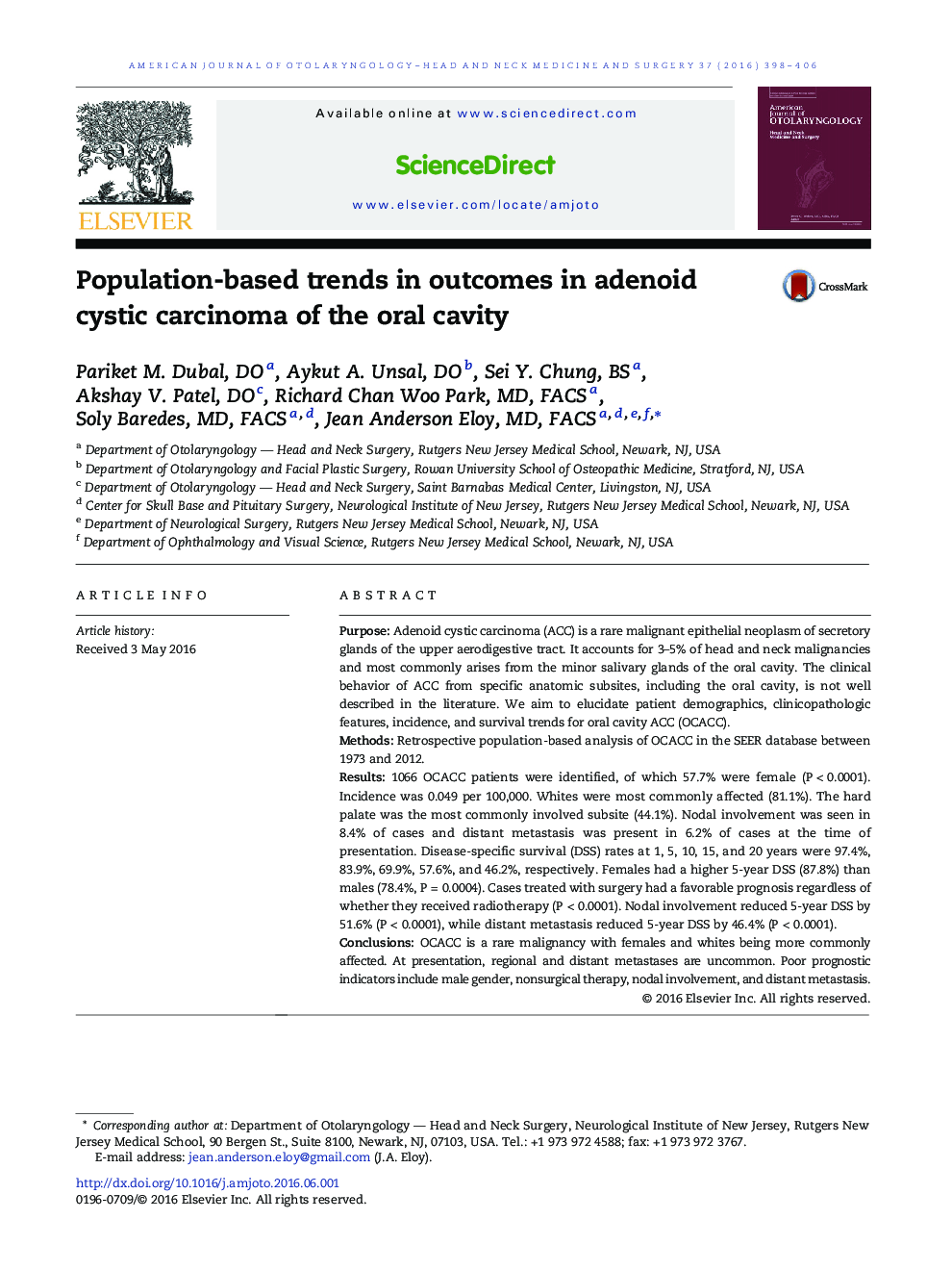| Article ID | Journal | Published Year | Pages | File Type |
|---|---|---|---|---|
| 4102889 | American Journal of Otolaryngology | 2016 | 9 Pages |
PurposeAdenoid cystic carcinoma (ACC) is a rare malignant epithelial neoplasm of secretory glands of the upper aerodigestive tract. It accounts for 3–5% of head and neck malignancies and most commonly arises from the minor salivary glands of the oral cavity. The clinical behavior of ACC from specific anatomic subsites, including the oral cavity, is not well described in the literature. We aim to elucidate patient demographics, clinicopathologic features, incidence, and survival trends for oral cavity ACC (OCACC).MethodsRetrospective population-based analysis of OCACC in the SEER database between 1973 and 2012.Results1066 OCACC patients were identified, of which 57.7% were female (P < 0.0001). Incidence was 0.049 per 100,000. Whites were most commonly affected (81.1%). The hard palate was the most commonly involved subsite (44.1%). Nodal involvement was seen in 8.4% of cases and distant metastasis was present in 6.2% of cases at the time of presentation. Disease-specific survival (DSS) rates at 1, 5, 10, 15, and 20 years were 97.4%, 83.9%, 69.9%, 57.6%, and 46.2%, respectively. Females had a higher 5-year DSS (87.8%) than males (78.4%, P = 0.0004). Cases treated with surgery had a favorable prognosis regardless of whether they received radiotherapy (P < 0.0001). Nodal involvement reduced 5-year DSS by 51.6% (P < 0.0001), while distant metastasis reduced 5-year DSS by 46.4% (P < 0.0001).ConclusionsOCACC is a rare malignancy with females and whites being more commonly affected. At presentation, regional and distant metastases are uncommon. Poor prognostic indicators include male gender, nonsurgical therapy, nodal involvement, and distant metastasis.
